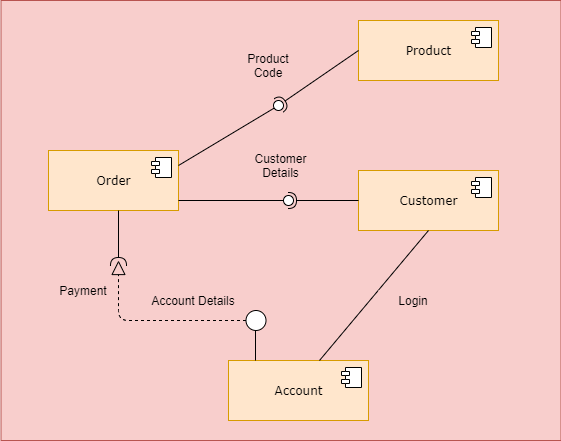UML diagrams for the online furniture shop project. Following are the different UML diagrams like Components, Activity, Use Case, and Sequence diagrams of the online furniture shop.
The Online Furniture Shop Management application will help to manage the shop. It allows the shop owner to manage the day-to-day process of a furniture shop conveniently.
UML Diagram for Online Furniture Shop System
We’ve compiled structural UML diagrams i.e. component diagrams, and three types of behavioural UML diagrams i.e. Activity, Sequence, and Use Case diagrams for the Online Furniture Shop Project. We have also explained the data flow diagram(DFD) for this project.
Here, we have two users, who will be interacting with the system. With the help of these diagrams, one can get a better understanding of the project. This web application is developed to provide users with an online medium where they can shop for different types of Furniture items. Admin is who will manage the overall application; whereas the user or customers can buy furniture products.
Component diagram for Online Furniture Shop Project
The component diagram below shows the structural relations between components in an online furniture shop system. The connected components by lines represent relationships within the systems. In the diagram, it can be seen that there are components namely product, order, customer, and account.
It shows how the customer component connects to the other components while using the system. Everything from the account details to product booking to payment flow can be seen in the component diagram.
Once the customer logs in to the system, the customer can select the desired product and place an order following the payment process. While placing the order, the customer’s account details get accessed and the order is confirmed after completing the payment.

Activity diagram for Online Furniture Shop Project
Activity diagrams in UML display the functionalities of various activities and flow in management processes and software systems. The flow in the activity diagram can be sequential, branched, or concurrent.
Admin can view the list of customers. Admin can manage the category of products and can update all product detail. Admin can view booking history and detail. Admin can manage payment and transactions.
Online customers can browse or search items, view specific items, book them, view, add to cart, and checkout. Users can view booking history at any time. Customers can make payments for the booking and view the payment history.

Sequence diagram for Online Furniture Shop Project
Sequence diagrams in UML are used to illustrate the sequence of messages between objects in an interaction. A sequence diagram consists of a group of objects that are represented by lifelines and the messages that they exchange over time during the interaction.
Online customers can search for products, view the price of a selected product, add the product to the shopping cart, and make payments for the booking.

Use Case Diagram for Online Furniture Shop Project
A UML use case diagram can create a broad, high-level view of the relationship between use cases, actors involved, and systems being performed.
As you can see from the examples below, use cases are represented by oval shapes, and the lines then show at which point an actor/user participates and interacts with their corresponding use case. You can see where each actor is involved within the entire process (and where they’re excluded).
For example, Admin will be able to add another admin and different products and categories of products into the system. Whereas, users can access the system for shopping purposes.

DFD Diagram for Online Furniture Shop Project
A data flow diagram represents the flow of information for any process or system. It shows the system with its relationship to external entities. Here, we can see how the users and the process flow work in a system.
After logging in, both Admin and Customer will land on the home page where they can manage their profiles. Admin can add, view products, manage prices of products, view bookings, check the availability of the product, etc. Here, Admin can also add another admin to manage the shop.
Customers, on the other hand, can shop online. Customers can search for particular products, and also view their bookings and payment confirmation on the system.

